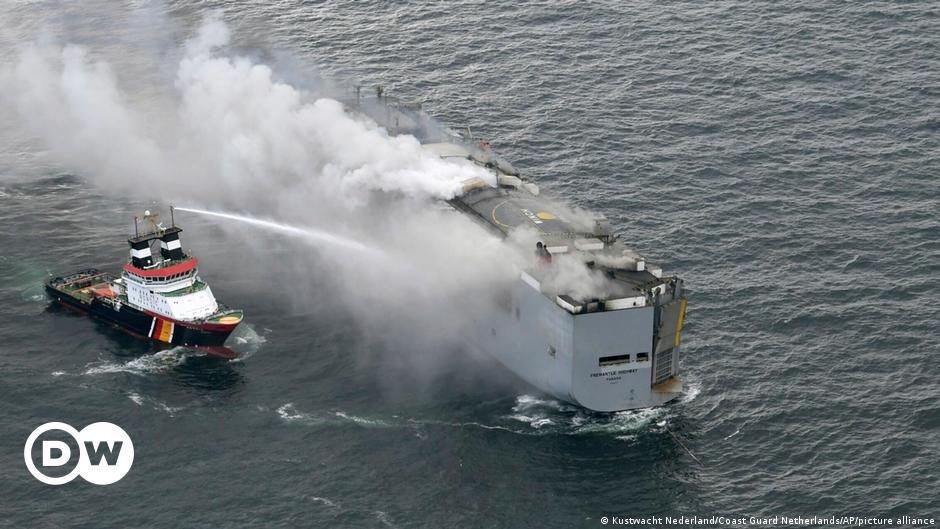A freight ship that caught fire off the Dutch coast and has been burning since, as fire extinguishers try to figure out ways to tackle the incident, has been carrying nearly 500 electric cars, far more than previously reported, the company that chartered the ship said.
Initial reports said that the ship was carrying 25 electric cars.
The Fremantle Highway vessel, which has burning for a fourth day off the Dutch coast, was chartered by Japanese transportation company K Line.
A spokesperson for the company said there were 3,783 vehicles on board, including 498 battery-electric vehicles. The spokesperson declined to comment on the kinds of car brands that were on the ship.
There is no information on whether the cargo ship was carrying cars by Japanese manufacturers.
Electric car battery fires much harder to put out
The Dutch coast guard said Thursday the cause of the fire was unknown, while Dutch media reported that the fire may have been after an electric car battery ignited.
Cars with lithium ion batteries have fewer fires than diesel and gasoline cars, but the situation can be dangerous when the batteries catch fire.
The fires then are hotter because there’s a lot more fuel inside an electric car battery because the battery cells are densely packed. It also takes a lot more water to put the fire out.
But pouring too much water to douse the flames is also not a tenable solution because there are fears of the ship sinking and environmental havoc.
The 199-meter Fremantle is still drifting in the sea, about 17 kilometers from the Dutch island of Terschelling.





I think it’s trying to say that the gasoline cars have no fuel in them when transported (thus less fire risk) versus the batteries which can still burn when “empty” (which I doubt they are)
If that’s what they meant (and I’m not convinced it is) then it was also worded badly. Now I wonder how cars are transported - if gas/diesel ones are indeed at empty and if EVs are unplugged to reduce any overheating/shorting. For the latter, it’s how phones and batteries are shipped, not assembled and low/no charge.
You’re being extremely captious from a statement that has a large chance of being made by someone who likely learned English as a secondary language…
I just pointed out it was incorrect. It could be someone who doesn’t know English well, or a ChatGPT generated article, or maybe translated badly. That doesn’t make it fine from a factual perspective.
I will say that 99% of the posts I tend to see from someone who apologizes for their English being a second language are much better than many Americans who post their ramblings. I don’t care much about spelling or grammar, if the point gets across. However in a published article with science facts, I do have a bit higher standard, regardless of the writer or (lack of) editor.
Usually new phones have over half battery. You damage lithium ion batteries when you drain them to 0%, so they wouldn’t ship the cars at no charge either.